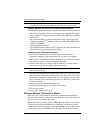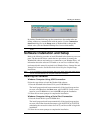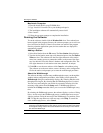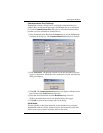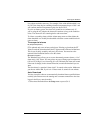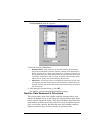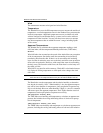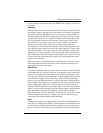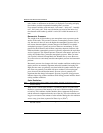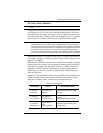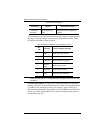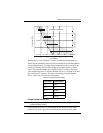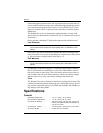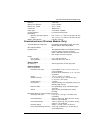
Weather Data Measured & Calculated
18
Wind
The anemometer measures wind speed and wind direction.
Temperature
The Weather Envoy uses the ISS temperature sensor to measure the outside air
temperature. A second temperature sensor in the Weather Envoy measures the
inside air temperature. Additional temperature sensors (available only with
wireless Vantage Pro and Weather Envoy systems) can be used to measure
temperature in other locations. You may use these extra sensors to measure
any other temperatures that are within the sensor’s range, including liquids
such as water.
Apparent Temperatures
The Weather Envoy calculates three apparent temperature readings: wind
chill, heat index, and the temperature/humidity/wind index (THW Index).
Wind chill
Wind chill takes into account how the speed of the wind affects our perception
of the air temperature. Our bodies warm the surrounding air molecules by
transferring heat from the skin. If there’s no air movement, this insulating
layer of warm air molecules stays next to the body and offers some protection
from cooler air molecules. However, wind sweeps that warm air surrounding
the body away. The faster the wind blows, the faster heat is carried away and
the colder you feel.
Wind chill is not stored in archive memory. Wind chill is calculated whenever
it is displayed. Editing temperature or wind speed values changes the wind
chill value.
Note: WeatherLink versions 5.1 and later use the Osczevski (1995) equation to calculate
wind chill. This is the adopted method used by the US National Weather Service.
Heat Index
The Heat Index uses the temperature and the relative humidity to determine
how hot the air actually “feels.” When humidity is low, the apparent tempera-
ture will be lower than the air temperature, since perspiration evaporates rap-
idly to cool the body. However, when humidity is high (i.e., the air is saturated
with water vapor) the apparent temperature “feels” higher than the actual air
temperature, because perspiration evaporates more slowly.
THW (Temperature - Humidity - Wind)
The THW Index uses humidity and temperature to calculate an apparent tem-
perature, but includes the cooling and heating effects of wind on our percep-
tion of temperature.
THSW (Temperature - Humidity - Solar - Wind)
The THSW Index uses humidity and temperature to calculate an apparent tem-
perature, including the cooling and heating effects of both and solar radiation



